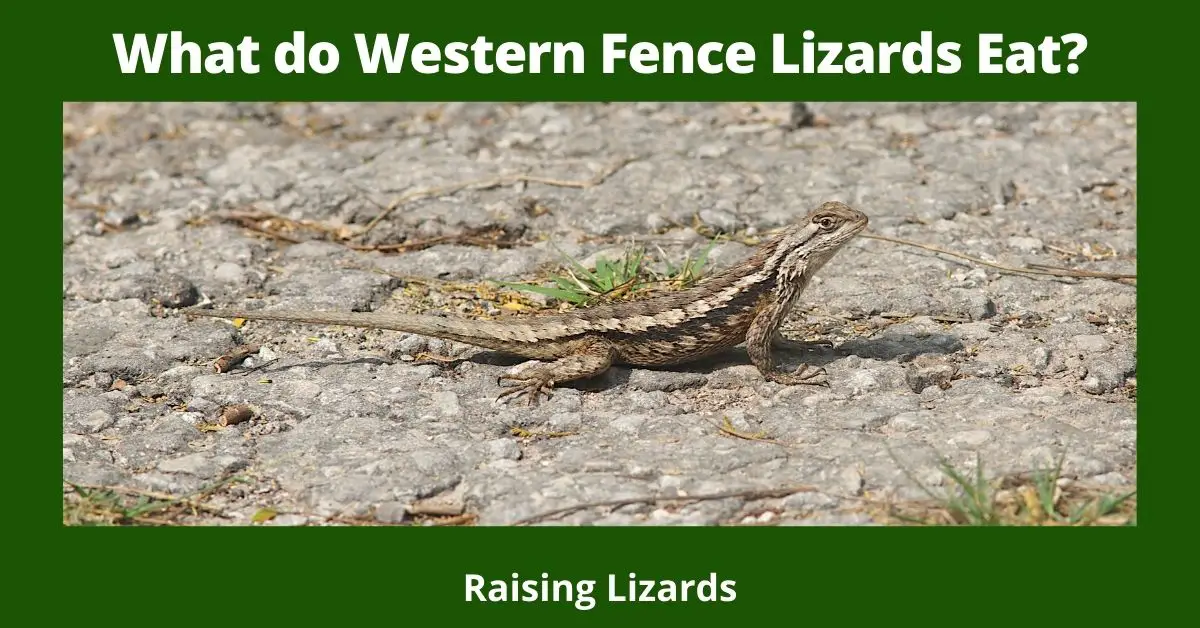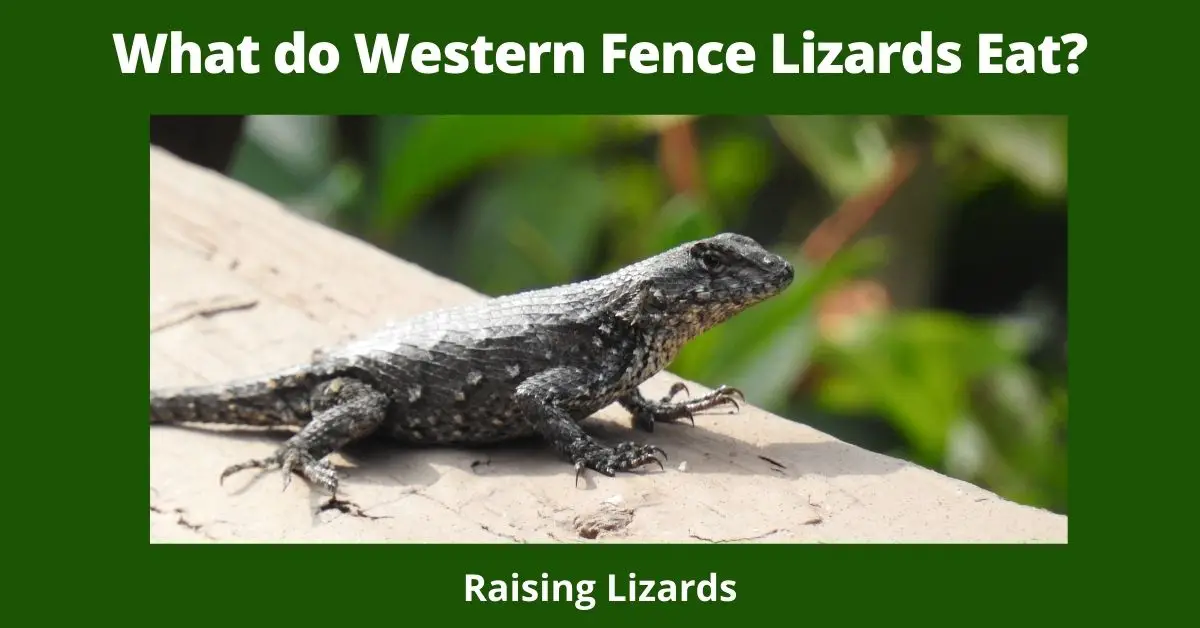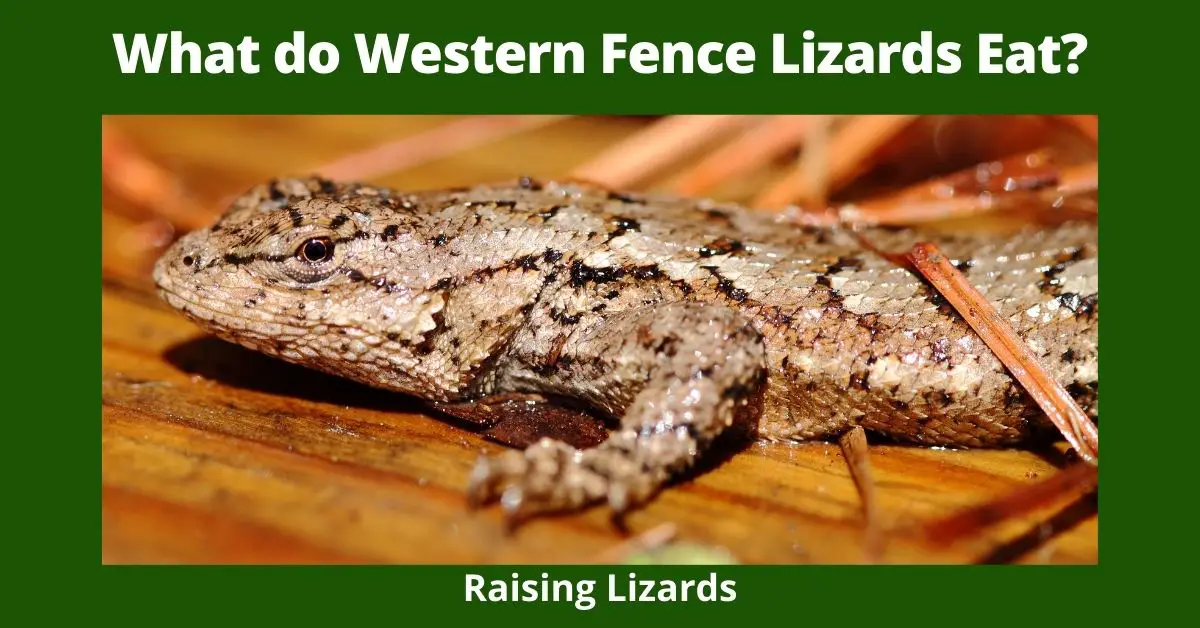Western Fence Lizards eat, Insects, Flies, Ants, Spiders, and Beetles. Also, Vegetables thrive with proper supplements.
What do Western Fence Lizards Eat?
Do you know what Western Fence Lizards eat? If not, you’re in for a surprise! These little lizards are omnivorous and will eat just about anything they can find. In this blog post, we will discuss the different things that Western Fence Lizards eat in order to help you better understand these interesting creatures!
What does a Western Fence Lizard Eat in the Wild?
A Western Fence Lizard is a small, chunky lizard with large scales on its back and belly. They are usually light brown to dark gray in color with blue patches on the sides of their stomachs, necks, and throats. In addition to these two primary colors, they can occasionally have yellowish or greenish tones as well. What do Western Fence Lizards Eat?
The average length of an adult Western Fence Lizard is between four and six inches long including the tail (which makes up about half the total body size). Their tails are not prehensile like other lizards such as geckos; rather they use them for balance while escaping predators by running away quickly from danger instead of climbing up trees where most geckos would go when being chased after.

Western Fence Lizards are omnivores, which means that they eat both plants and animals. Their diet consists of a variety of insects (such as beetles, caterpillars, grasshoppers, and spiders), fruits, berries, and flowers.
They have also been known to scavenge for food on occasion when necessary. Interestingly enough, Western Fence Lizards are one of the few lizards in North America that can consume venomous snakes without being harmed; their stomachs contain a special enzyme that neutralizes the snake’s venom.
This allows them to feast on carcasses of rattlesnakes and other poisonous snakes without any danger to themselves. Western Fence Lizards are native to the western United States and can be found in most areas west of the Rocky Mountains. They prefer open grasslands, deserts, or any area where there is plenty of sunlight.
Their primary habitat includes shrubs and wooded areas near streams and rivers because these provide shelter from predators such as hawks and owls while at night when they’re hunting for food; during daylight hours though they like basking out in full view where their bright colors may act as camouflage against predators with duller colored eyesight such as humans!
These small lizards will use their tails to avoid being eaten by flipping them up so that it looks like an insect flying away instead of running towards safety which would attract attention from unwanted visitors.
In the wild, a Western Fence Lizard can live up to seven years but many don’t make it past their first year because of predators that hunt down these delicious little creatures before they have time to reproduce or reach maturity themselves!
This is especially true if you’re keeping them as pets since most pet store owners won’t allow customers access when purchasing one from them so there’s no guarantee how long your lizard will survive under different circumstances than what would otherwise occur outside in nature where some may last longer than others depending on factors such as climate conditions and where exactly they end up living throughout its entire lifespan (which could vary greatly based upon location).
How do you care for a Pet Western Fence Lizard Diet-Wise?
One of the most important things you can do for your Pet Western Fence Lizard is to provide a healthy diet. A balanced diet will help keep your lizard healthy and growing. Here are some tips on providing a healthy diet for your pet:
- Provide a variety of fresh fruits and vegetables, including leafy greens, broccoli, cauliflower, and sweet potatoes.
- Give your lizard a small number of live insects each day, such as crickets or mealworms.
- Make sure that there is always clean water available for your lizard to drink.
- It is also important to remember that lizards need UVB light in order to stay healthy. You can provide this light by using a special lamp designed for reptiles.
- Supplements include calcium and vitamin D, which are important for bone health. You can give your lizard these supplements by adding them to its food or water.
Do different age groups of Western Fence Lizards have Different Dietary Needs?
- Baby – The young of any lizard will be more carnivorous than the adult form.
- Adult – Most lizards are omnivores with a varied diet, however, they can become herbivores and only eat plants or vice versa and become carnivores eating mainly insects like crickets in captivity.
- Old Age – No major changes to dietary habits would be expected as lizards age.
Western Fence Lizard’s Diet Includes
- Insects – the insets that are good to feed a western fence lizard are flies, ants, spiders, and beetles.
- Mammals – lizards will also eat small mammals such as rodents or birds.
- Nectar – some lizards have been known to feed on the nectar of flowers.
- Spiders – spiders are a common food for western fence lizards.
- Crickets – some lizards will eat crickets, though it is not as common as other insects they may find in their environment (flies).
- Grasshoppers – Grasshoppers are another great source of protein that can be found around the home and outside where there are plants.
- Beetles – beetles are a great food choice for lizards, as they are filled with protein and other nutrients that help keep lizards healthy and strong.
- Rodents – small mammals such as rodents make a great meal for western fence lizards.
- Birds – birds can also be a common food source for these lizards, as they are often found near the ground where lizards like to hang out.
What are the best types of Supplements to Keep My Western Lizards Healthy?
Supplements are an important part of keeping your western lizards healthy. They provide a great nutrient source for the lizard and will ensure that it receives all of its essential vitamins and minerals to be as healthy as possible. There are many different types of supplements out there so you want to make sure you pick the right one for your lizard, especially if you want it to grow up healthy.
Vitamin B12 is one of the most important vitamins for western lizards. It is necessary for normal growth and development, as well as proper cell function throughout life. A lack of this vitamin can lead to stunted growth or even death in some cases! You should always supplement with a good quality vitamin B12 supplement to make sure your lizard is getting enough.
Another important mineral for western lizards is calcium. Calcium is necessary for bone growth and strength, as well as muscle contraction. A lack of calcium can lead to weakened bones and skeletal deformities in growing lizards. It’s therefore important to always provide a good quality calcium supplement when feeding your lizard.

There are many other vitamins and minerals that western lizards need, but these three are some of the most important ones for keeping them healthy throughout life. Make sure you’re giving your lizard everything it needs by using a high-quality supplement!
If you want to keep track of how much your lizard is eating, consider using a food scale to weigh their prey. This will help you make sure they’re getting the right amount of nutrients and not overeating or undereating. A healthy diet is essential for keeping your lizard healthy!
Summary: Western Fence Lizards eat insects and other small animals. They are omnivores, meaning they will also scavenge for food when necessary. These lizards have adapted to living in desert environments by storing water in their bodies so that it doesn’t evaporate too quickly from their skin like other reptiles might experience during hot weather conditions outside of their natural habitat. Western fence lizards are one of the most common types found throughout North America where they can survive in many different climates from temperate forests to deserts and even arid regions such as Mexico or California’s desert areas near Death Valley National Park


